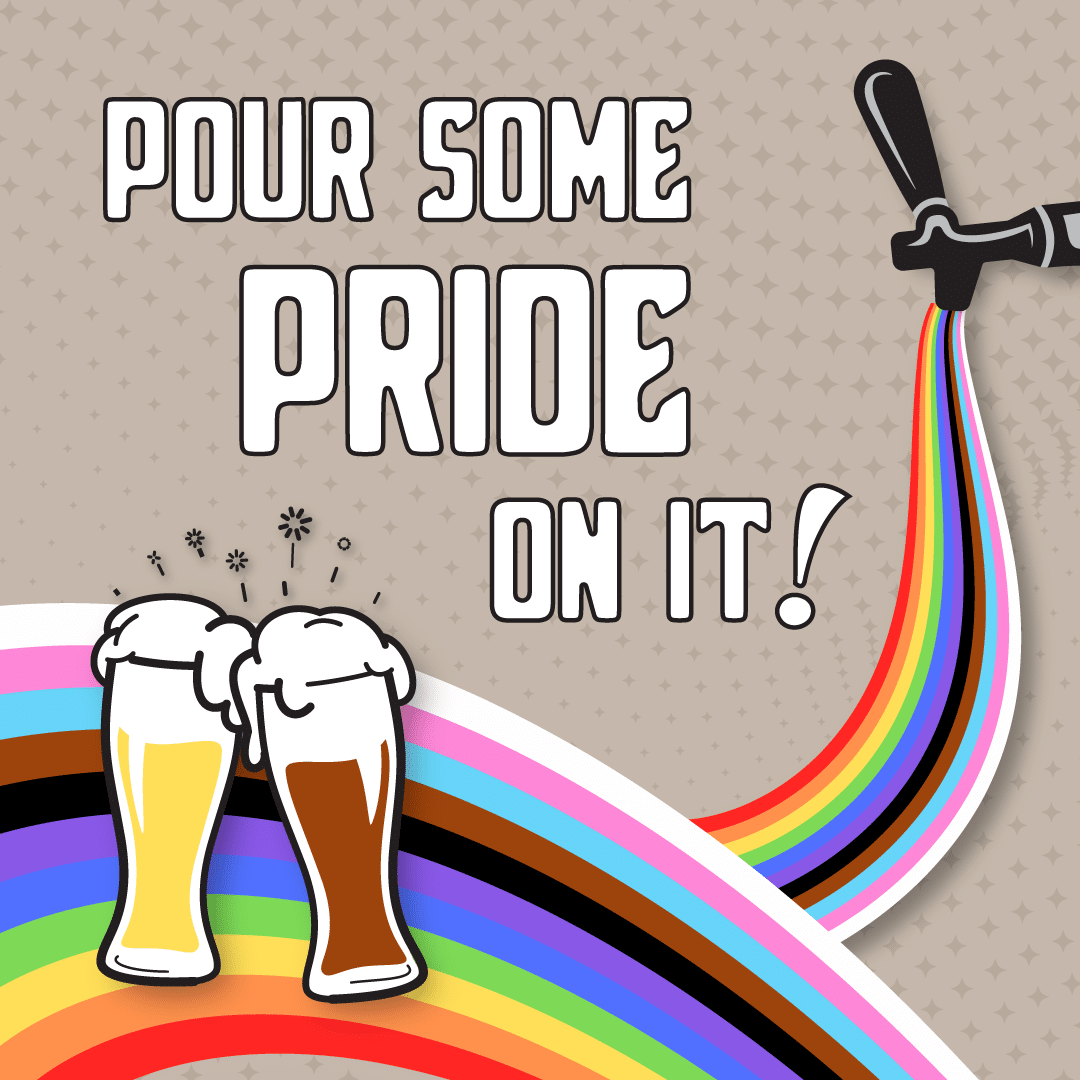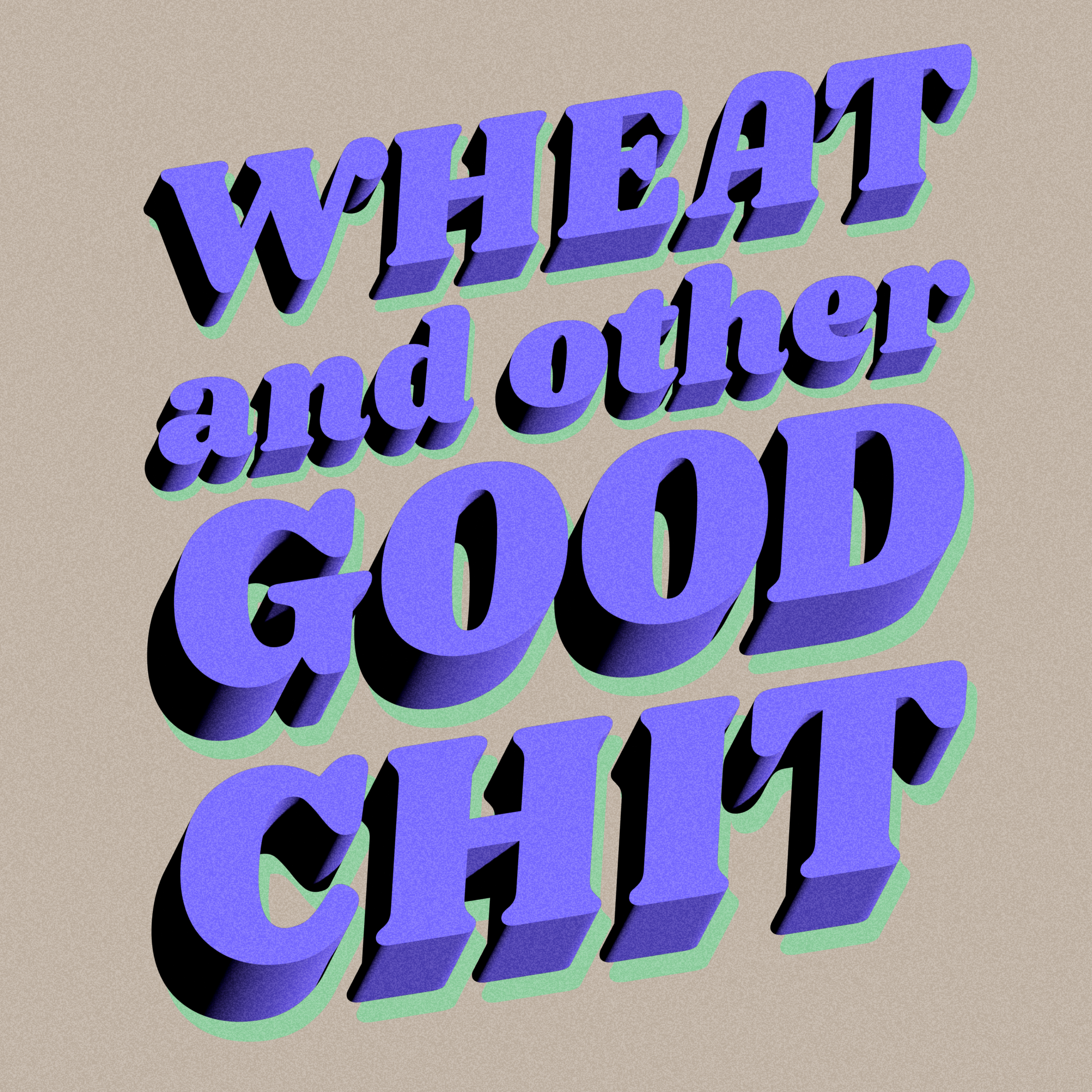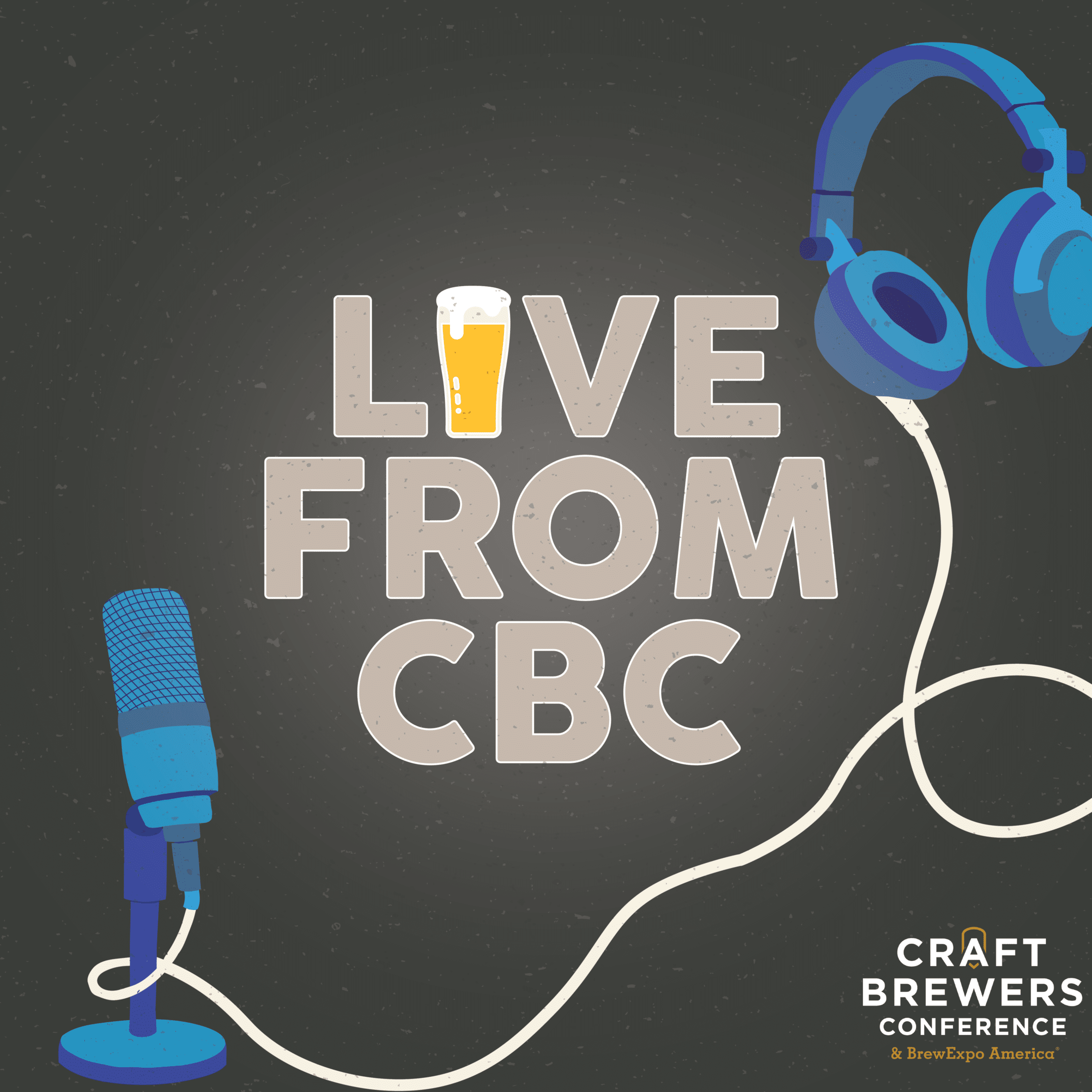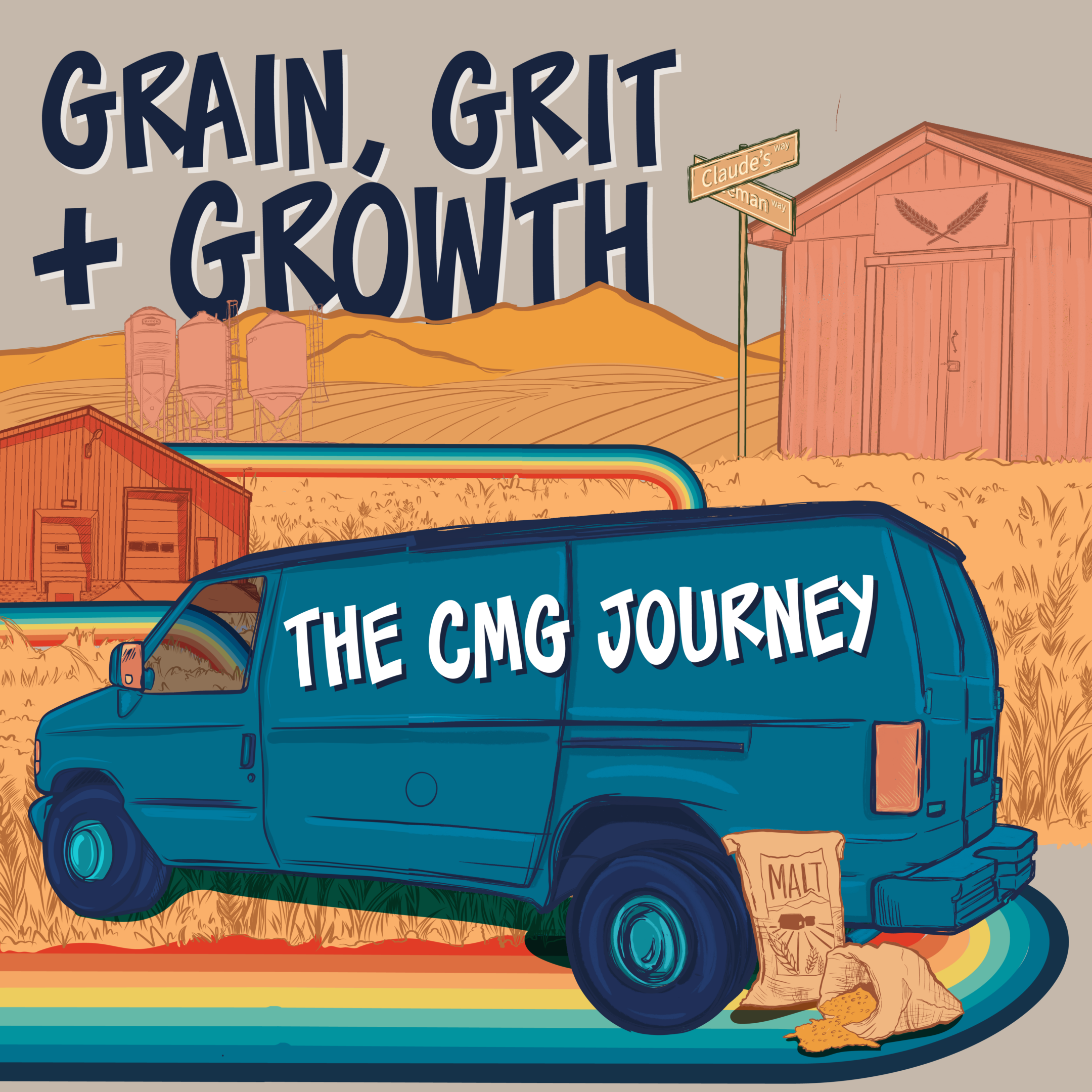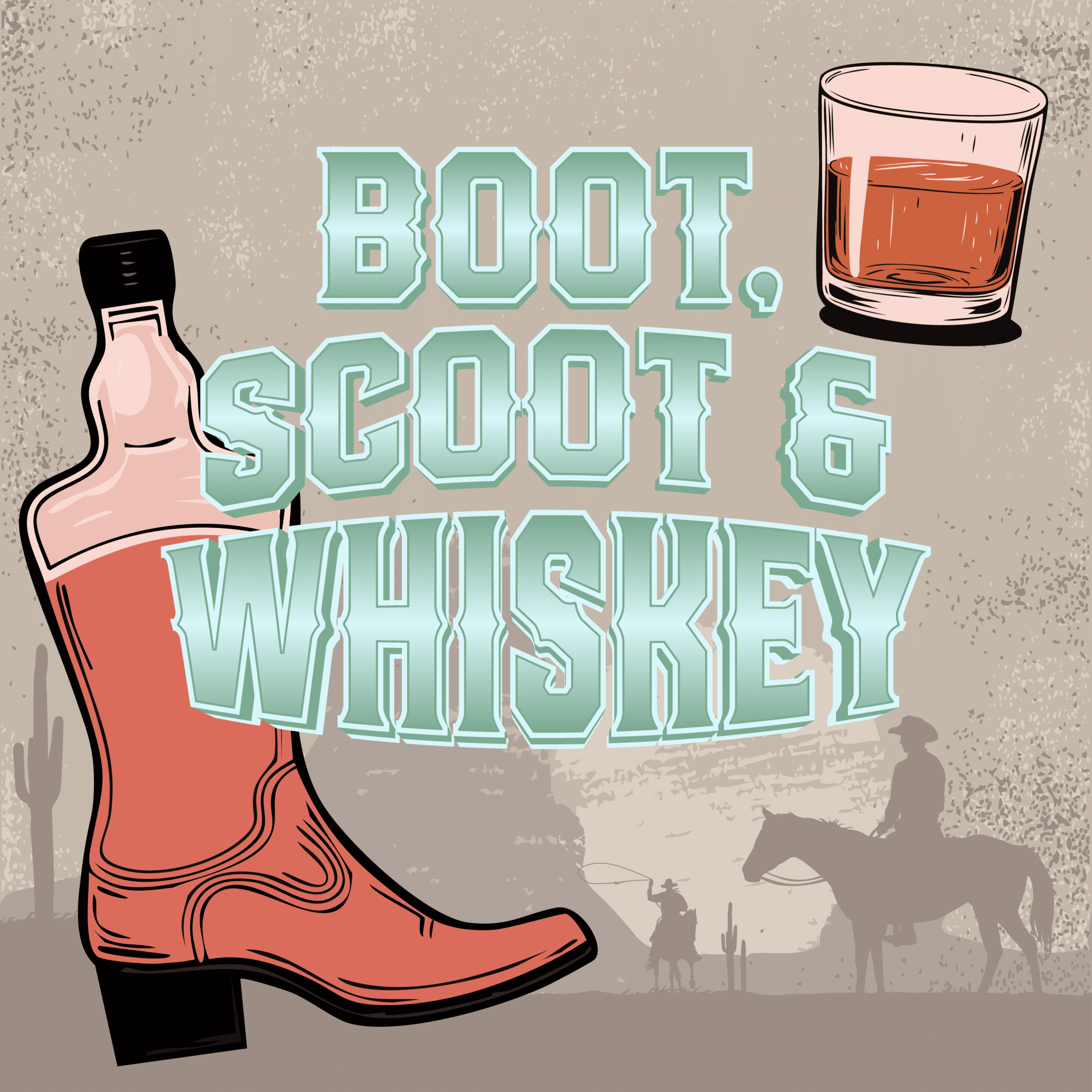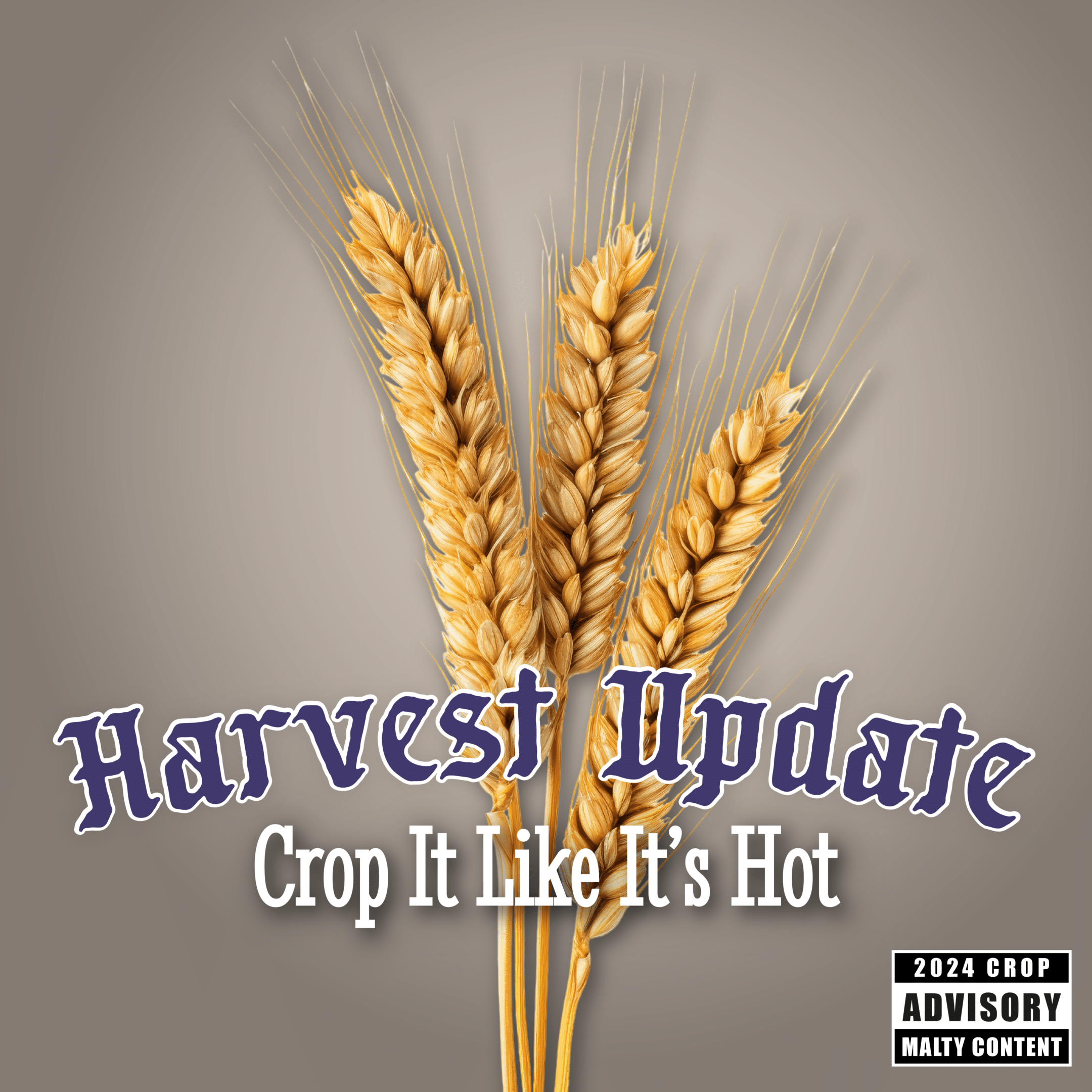
EPISODE 1A: AMERICAN WHISKEY
TOBY TUCKER – SENIOR DIVISION MANAGER, COUNTRY MALT GROUP
GUEST:
GEOFF FISCHER – TERRITORY SALES MANAGER / RESIDENT DISTILLING EXPERT – COUNTRY MALT GROUP
- Geoff tells Toby the story of how his love of that beautiful brown liquid we call Whiskey began.
- Ingredients typically used when making American Whiskey, including the current changes in the preferred barley varieties.
- Ethyl Carbamate (EC): How EC is formed during the distilling process and what can be done to reduce the overall EC content.
- Glycosidic Nitrile (GN): What is GN and how does it affect distilled spirits?
Transcript - American Whiskey
EPISODE S.1, E.1
[AMERICAN WHISKEY]
[00:00:00] TT: Welcome to the BrewDeck podcast. Proudly inspired by Country Malt Group. I’m your host for today’s episode, Toby Tucker. I’m really excited about this show because I get to spend some time picking the brain of a great guy and talk about a subject that’s piqued my interest really over the last several years or so.
So today, we’re going to talk a bit about distilling and try to shed some light on and answer some questions that craft distillers and even folks like myself, a casual visitor of whiskey, so to speak, may have at some point pondered.
So without further ado, let’s welcome Jeff Fisher to the show. Hey, Jeff. Thanks for hopping on today.
[00:00:49] GF: Hey, Toby. I’m really glad to be here to be doing this podcast with you. This subject is definitely one of my favorites. I’m a former brewer with over eight years of experience with Desert Edge brewing, Bohemian brewing, and Uinta Brewing in Salt Lake City.
I have studied and completed courses from UC Davis, the Siebel Institute in both Brewing Science and Distilling. And for the last 15 years, I’ve been working on the ingredient supply side of our industry. And I currently work as a territory manager and the National Distilling Specialist for the Country Pop.
We also supply grains and other ingredients for distilling.
[00:01:28] TT: Pretty impressive resume, to say the least, Jeff. It sounds like you’ve kind of cut your teeth in several aspects of both brewing and distilling. So let’s peel back the first layer of the onion, if you will, specifically around whiskey.
There are a lot of different stories on how people were introduced to whiskey. Some people’s experiences may not be that memorable. On the other hand, some can probably remember exactly when, where, what they had, what they’re doing, and how it opened up a whole new world of kind of a lifelong whiskey journey, so to speak.
Tell me how you started your journey into kind of a true appreciation and understanding of whiskey.
[00:02:04] GF: Well, I’m sure, like many of you, you know, I first discovered whiskey probably as a shot, maybe on my 21st birthday or, you know, we threw it inside with a Coke. You know, I didn’t really discover a love of whiskey the same way I did beer, you know, stealing a sip from my dad as I grew up. What he did that evening is he taught me to pour just the smallest amount of water in my glass of single malt. The first one was Glenlivet and then was Ardbeg. And he taught me to inhale those amazing aromas prior to taking my sip. He taught me to savor and notice that there were Christmas spice flavors from the Spanish red oak sherry casks that the spirit was aged in. There were fruity esters from the fermentation, and there was sweet malt, and in the case of our Arteg, there was quite a bit of smoke. That evening was really significantly eye-opening for me. No longer did I look at whiskey as simply kind of this brown alcohol delivery device. So my passion for love of whiskey started that night. And it continues really until this very day.
[00:03:27] TT: And I’m getting extremely thirsty just thinking about that descriptor there, looking at my watch, ready for the day to end. And that’s a cool story. We get a lot of questions from distillers and brewers about the differences in varieties of barley and fermentable grains. There’s a lot out there, Geoff, and you know, obviously would eat up an entire day of you and I chatting about it. But let’s focus on particularly distilling and comparing US and UK type distillers malts.
[00:03:53] GF: Well, I’d like to start our discussion on that with just a little background into the production of traditional American and UK style distillers malts and how they’re used. So traditionally, North American distillers malts were produced from six-row high protein barley. Not only was this used because it grew well in North America, but because North American whiskeys were produced using a tremendous amount of adjunct unmalted grains, corn, wheat, rye, and even unmalted barley have been and are still used as much as 90 percent of the overall grain bill. Many of the traditional styles in American whiskey, now, of course, even higher amounts of unmalted grains can be used, but it usually requires a source of extraneous enzymes, which is kind of a deeper topic. Six-row barley typically always had a higher number of enzymes [inaudible]. Now, this has been shifting quite a bit in recent times as some two-row varieties such as Metcalf, Coplin, and even Cinergy are being bred, that they have almost as many available starch producing enzymes as comparable six-row varieties.
At the very least, they have more than enough for full conversion of up to 90 percent of unmalted grains. Two-row also offers some significant advantages to the farmer and the maltster, as well as a slightly higher PSY than six-row or predicted spirit yield. Whether it’s made for six or two-row North American style distillers malts, it starts with really high protein barley.
It’s a minimum of 13 percent. It’s malted to a much higher degree of modification than, let’s say, typical Brewer’s malt. This, along with a really higher finished moisture content. This is due to a significantly lighter kilning regimen. This allows for a much higher enzyme package but an overall lower extractor PSY. Now, since the majority of the fermentable sugars in a North American whiskey mash come from these non-malt sources, the PSY malted barley traditionally has been of little concern, like I said. Now, this again applies to the traditional types of northern whiskeys. Bourbon, Rye, Tennessee, Canadian corn whiskey, et cetera, produced using traditional methods. Now, that does bring us back to the UK-style distiller’s malts or what is usually called pot still malts. These malts are produced from very low protein barley and from varieties like Concerto, Odyssey, Capino, and some others. And there are new ones all the time. Keep in mind, when we talk about barley variety, whether it’s North America or the UK, this is ever-changing and evolving due to disease-resistant breakdowns and other factors.
Most commercial malting barley varieties don’t stay around forever. Now, there’s an exception, but generally, it’s good not to get too hung up on the variety of barley unless you’re talking an heirloom type or heritage type. But I’ll expand on those later in our discussion. UK distillers or pot still malts, are produced, as I said, for very low protein barley, sometimes sub 10 percent. Now, they also are kilned very lightly so that they can produce a malt that has an extremely high PSY. All malt distillers really want to maximize the available sugars for fermentation. And finally, distillation for many pounds or tons of malt. There is enough protein to produce more than adequate levels of enzymes in these pot still malts, as well as enough protein for FAN and for sugar conversion, and for yeast health during fermentation.
Now, I know my friends from the UK at Bairds Malt can go into much greater detail about pot still malts. But US distillers malt is a high protein, high enzyme, big DP for large inclusions of unmalted adjuncts where UK distillers malts or pot still malts are low protein with a very high PSY for all-malt whiskey.
Now, all of this is changing, and that’s in no small part due to the emergence of craft distillers. Craft distillers have not only readily embraced nontraditional malt, but they’ve also embraced really nontraditional techniques. Now, at the very least, what they’re doing is they’re taking more traditional all whiskey malts and techniques, but they’re applying them to North American style type whiskey.
[00:08:26] TT: Oh, that’s great. Well, I’m glad you brought up our friends at Bairds Malt as well. We’ll have the opportunity to connect with Eddie Douglas, director of Commercial Sales of Bairds, in an upcoming episode. And I’ll certainly be able to pick his brain about the barley in that region, as well as some work he’s done on barley terroir and the results of these and distillation. We’ve got quite a few breweries that integrate a distilling operation into their facilities or distilleries that use or, you know, collaborate with distillers on limited runs, using wort from the brewhouse that seems to make sense and lends to potentially very interesting end product.
[00:09:05] GF: Absolutely. Since traditional Scotch or UK-style, all-malt whiskeys are produced very similarly as beer, using breweries to produce the wash for craft whiskey production, it really makes a lot of sense. In traditional Scotch Whisky production, what they do is take the milled grain along with the preheated third runnings from the previous wash and mix them together to create a new mash. Now, this mash then rested to allow for full conversion of starches to fermentable sugars. Then that initial liquid is drained off, and it’s sent to the fermenters what they call [inaudible]… New hot water is introduced to that mash. This is allowed to rest again. Then the liquid is again drawn off and sent to the fermenters. Finally, more hot water is added, the mash is just briefly rested, and then that liquid is drawn off to become the foundation water for the next new mash.
Now, this is very similar to traditional UK brewing techniques. The major difference is that the wash that’s created will be fermented and then distilled into whiskey but was never boiled. So there was no coagulation of proteins, no hops were added. And most importantly, there was no sterilization of the wash or, in the brewer’s terms, the wort. If you’re going to turn this into beer, you would, of course, boiled the wort would have added hops, and you would have cooled it before sending it to the fermenters. While some of this information may seem kind of like your review, for some people, it directly applies to what many craft distillers are doing.
So unlike more traditional North American whiskeys that are mashed, fermented, and distilled, on the entire [inaudible]. All-malt whisky’s typically separate the grain for liquid and just ferment and distill the liquid. So for existing breweries that want to begin distilling, they already have most of the equipment needed to produce a distilling wash. This is a big advantage. They have mills, mash tuns, lauter tuns, fermenters so that they can mill, mash, separate grain from liquid, and control fermentation. Now, since breweries also have a boil kettle, just unlike traditional distilleries, they can choose to sterilize their wash or not based on their needs. I know a number of craft distillers that do this. They will boil [inaudible] and fermenting. Now, this has a huge advantage in capital expenditures, really, since they have all this. Also, since they’re separating the grain from the liquid, they can utilize less expensive roller mills to mill the grain as opposed to having more expensive hammer mills that really will pulverize the grain into flour. And also, they can utilize the still that doesn’t require an agitator in the still; this saves them money in the initial cost of the still. So, in short, the distiller could utilize much of the equipment that’s already used in the brewery. This allows the equipment to really do double duty. One of the disadvantages is that all the equipment can be more expensive upfront than just the bare minimum a distiller would need to begin distilling North American style whiskey.
So equipment-wise for that, you know, and I’ve seen this in craft distilleries really just need a hammer mill to mill your grains to flour. You need a tank to cook that mash in; you need a single-walled vessel of some kind. I’ve even seen barrels used to ferment it in. And then it’s still, and as I mentioned above, one with an agitator. There is no need for temperature-controlled mash tuns, lauter tuns, temperature-controlled fermentation vessels of any kind. So, unless the distiller when he’s starting plans to produce beer or is a brewer planning to distill or if he has to plan a brewery that produces wash, the start-up costs could be much higher to produce whiskey this way from a fermented wash instead of from a fermented mash. This also has some other advantages, namely the utilization of higher proportions of barley malt in more all-malt production.
Barley malt still has its husk. The issue with boiling a lot of the husked barley malt as you would during distillation, you can extract tannins and other flavor compounds that can give a whiskey a harshness that’s undesirable. In traditional North American whiskey’s this isn’t really a problem since barley malt is only about 10 to 15 percent of the mash. But if you want to produce an all-malt or mostly barley malt whiskey, 50 percent or more, then that can become an issue.
So by utilizing lautering, you eliminate the husk material from the wash and reduce any issues arising from them. Also, the stillage that’s leftover is a little bit easier to deal with. When you separate the grain from the wash prior to distillation, you can just send that grain off to a farmer as feed. Then after distillation, you just need to dispose of the cooled liquid stillage; however, if the grain is still present, in that stillage, as it is in North American style whiskeys. This can occasionally be a bit more difficult for distillers to dispose of. One of the other disadvantages of producing whiskey by separating grain from solid is that you can become limited in the number of adjuncts that you can use, or at the very least, limited in the forms those adjuncts can take.
Since unmalted grains contain large amounts of beta-glucans and things, they can produce a wash. It’s really very thick, and it’s hard to separate from the grain without the use of more extraneous enzymes or rice hulls and things. Also, unmalted grains need to have their starches gelatinized so that the starches can be converted to fermentable sugar by the enzymes in the malt. Now, this is done by either cooking the raw grains or utilizing flaked or torrified grains, which come pre-gelatinized. Now, most breweries do not have a separate cereal cooker to cook raw grains. So they would have to use a much more expensive option of using pre-gelatinized flaked grains.
So let’s look at the advantages to a brewer becoming a whiskey distiller is; you can utilize the same equipment and technical knowledge you have in crafting the great wash for your whiskey. The only things you really need are a still, and then some expertise in operating that. The capital investment is relatively low if you’re an existing brewer. Now, generally, the same holds true for a distiller that uses wash produced by a brewery. They also typically utilize much higher proportions of barley malt in their wash. And this results in a potentially smoother flavor of the whiskey.
Finally, getting rid of the stillage can usually be easier when the grain is disposed of separately. The disadvantage to this system is that the entire start-up costs can be higher overall if you need to purchase an entire brewery, set up equipment, and a still at the same time. But secondly, the operational costs are also a bit higher, especially if you sterilize the wash through boiling and controlled fermentation temperatures. Raw material costs are also higher this way because malt is more expensive than raw grains. Also, you get less overall extract or PSY when you separate the solid from liquid, as you’ve got to mill the grain coarsely so it can be lautered and separated. Finally, as mentioned, you are limited in the number of unmalted grain choices in usage.
[00:16:33] TT: Makes makes a lot of sense and very logical information; Geoff, appreciate it. I’m going to continue to pick your brain here on raw materials, as it does seem like there are just a plethora of options available for the distilleries.
If someone’s just getting their feet wet as a new distiller, do you have any advice for choosing and using a specific fermentable something as possibly a good base or specialty?
[00:16:56] GF: Well, that’s a good question, Toby, and it does fit into what we’ve been talking about. Now, a few things can go into a choice as a good base fermentable. First, what type of whiskey do you want to make is? Obviously, if you want to produce bourbon, your base fermentable is going to be corn, right? Or if you’re producing a rye whiskey, then your base fermentable is rye. However, if you want to make a whiskey made primarily from barley malt, you have a lot of options today that you can choose to be traditional and use a pot still style malt. This will provide you with a lot of PSY and great malt flavor. As we discussed earlier, it’s a great choice to start for an all-malt whiskey. If you’re already brewing beer or you plan to brew beer in conjunction with whiskey-making, then you may want to look, or you can look at a standard brewer’s kind of base two-row malt. It’s a great choice economically, as it usually is a less expensive malt option. And since you are also using it as a base for your beers, you can buy from a supplier in larger quantities, and that can save you some additional money.
Brewer’s two-row typically does have a high enough enzyme package to convert at least 40 percent. It has a fairly high available extract and a relatively pleasant malt flavor. So this is a great choice if you want to use a lot of specialty malt, such as crystal malt, roasted malt, and other specialty versions of traditional adjuncts like rye and wheat. Another great choice for base malt for whiskey making is to look at those heirloom or heritage barley malts I mentioned above. Those would be something like Maris Otter, Golden Promise. These barley varieties are really prized for the deep malt flavors that they bring with them. Maris Otter, you know, seems to provide a somewhat bready and occasionally slightly toasted bread flavor. At the same time, Golden Promise can give you a really rich, nutty, and toasty flavor. They can really help add that UK flavor to making a beer, and they can add richness to any whiskey. All these based options can be used for blended completely by themselves completely with no additional specialty malt to make great whiskey. The distiller could just stop with a good base. However, specialty malts can be used to further add flavors, aromas, complexity to craft whiskeys by utilizing crystal malts in the mash. For example, a distiller can add some of those caramel or dried fruit flavors that are desirable in some finished whiskeys.
Crystal malt can also be added to give a perceived sweetness to a whiskey. You know where if you’re utilizing some dark roasted malts, like chocolate or black malt, a distiller can really add some of that dark chocolate, roasted, slightly burnt notes to their whiskey.
Both types of these specialty malts work really well in whiskeys, especially those that won’t likely be aged as long or whiskeys that’ll be utilizing second-use barrels. The use of specialty malts can add complexity or perceived sweetness to whiskey that may not spend as much time extracting those flavors from a brand new oak barrel.
Specialty malts like malted rye can add those really spicy notes without some of the difficulty in dealing with unmalted. Malted Rye along with malted wheat also typically have crystal or roasted versions of them. Some of these can add more biscuit-like flavors, toasted malt flavors, this non-barley, specialty malts can be used to a wonderful outcome, even in more traditional North American style whiskeys, like bourbons and ryes. You can replace the rye component in your bourbon or your rye with malted rye or a biscuit rye type of thing. And this could add wonderful spicy and then toasty characters.
They just aren’t found in a typical rye whiskey. The same can be said to a lesser degree about bourbons. Add a little bit of rye malt to your bourbon or specialty rye malts to your bourbon. Another branch of specialty malts that are used in traditional malt whiskey making and also by modern craft whiskey is smoked malts.
These are a bit of a hybrid between a base and specialty malt. Since most smoke malts are available, they have enough enzymes to convert themselves at least. They can be used in as much as one hundred percent of the base grains or in reduced amounts.
Then they act more as a specialty malt to work in conjunction with a more typical base malt. Now, the most obvious addition that smoke malt adds is a smoky flavor and aroma. So for peated malt, which is a very traditional smoked malt used in many Scotch whiskeys.
It just comes through the campfire aroma and flavor. Peated malts can be extremely smoky. So depending on how it’s produced and the amount used, results can really be kind of mild, or some brands are extremely intense. There are other smoke malts to choose from.
There are smoked malts produced from Beachwood. This is the one that’s used the traditional German smoke lagers. Now, this flavor and aroma come across as meatier, bacon-like. Others are fruit woods like apple or cherry. These come across with a little more subtle, sweet, fruity smoke aroma. Now, mesquite is another one. It provides a very earthy, campfire-like flavor aromas as well. The whiskeys that I’ve had made from mesquite, you know, [inaudible]. But they do seem to ride kind of that southwest feel.
Again, smoke malts can be used in malt whiskeys or even in more subtle amounts, even in bourbons and ryes. Now used in very small amounts, they can add a really subtle smokiness that might mimic what you pick up from a freshly charred barrel. The real use of all these specialty malts really is limitless, and they really can be an amazing addition to any craft whiskey.
[00:23:11] TT: That’s great. I’m going to switch gears a bit here, Geoff, and bring up a subject that I don’t think gets a lot of attention, in my opinion, should be a topic of more discussion in the distilling world. Ethyl carbamate, you tell us what it is, how it’s formed in the process, and how you can prevent this in production?
[00:23:29] GF: Wow. Those are really great questions. You know, they’re ones that distillers in other parts of the world for even up to a couple of decades have already been having to answer and deal with. So let me answer the first part of your question.
What is Ethylcarbomate? It’s an ethyl ester of carbonic acid. It’s also known as urethane. Please don’t confuse that with polyurethane. It is classified as a group 2a carcinogen, meaning it is a probable human carcinogen. Now it is formed naturally in all fermented foods and beverages. Soy sauce, for example, has quite a bit of it in it. It does seem to be at higher levels in alcoholic beverages, though, with the highest levels detected in distilled alcohol beverages which is what I was talking about it. Currently, there have been no studies that I’m aware of that have been done on EC’s effects on humans. But it has been studied and linked to cancer in mice, which is again why it gets a 2a carcinogen designation. So that’s really the reason we’re talking about it. Because of this, some countries have begun placing restrictions on the amount that an alcoholic beverage can contain.
Currently, the US has no restrictions or limits on distilled beverages for ethyl carbamate. But there are those that believe those limits are coming at some point. So it’s something worth knowing about and considering when producing a distilled spirit. So next, we would look at how it’s formed. EC, ethyl carbamate, can be formed by ethanol and certain other precursors.
So one of those, let’s say, is urea, which is produced by yeast during fermentation. But another precursor that’s getting a lot is glycosidic nitrile or GN. Now GN is present in certain cereal grains like barley. Without going into some really advanced chemistry, GN is basically enzymatically converted to cyanide.
First, an enzyme in malt leaves off the glucoside, and it leaves this isobutyraldehyde cyanohydrin, so IBAC, which then during a vigorous fermentation or during distillation that converts cyanide. Well, that sounds scary. It’s really not. But the question then is, how does that cyanide become EC?
Well, studies show the EC formation from cyanide requires three things. Ethanol, heat, and copper. During distillation, we really have all three of those in abundance. Heat causes the reaction between the cyanide and the ethanol. Well, copper acts as the catalyst. You’re noticing this reaction doesn’t seem to take place in more all stainless steel stills. But most distillers have copper in their still. So what most science agree would probably be the best way to prevent EC formation then is to eliminate the existence of precursors. For whiskey distillers, this means choosing barley varieties that have been bred to have very low or no glycosidic nitrile levels.
Now, since EC has been an issue in other countries for many years, the Scotch Whiskey Distillers have already been using low to no GN barley malt years. In fact, the IBD, which is the Institute of Brewing and Distilling, offers a list of acceptable brewing and distilling varieties each year, many of which are low, GN producers. Varieties that we previously mentioned, like Concert, Odyssey, Prapino, have low to no GN. Now there are varieties in the breeding programs currently that will eventually replace these. In the US, we have no real such varieties as ethyl carbamates ever really been much of an issue.
This, of course, is changing primarily to meet the needs of distillers, both large and small, craft distillers. You’re seeing experimentation with growing varieties such as Odyssey in the US, as well as breeding for low GN in new varieties in development. And the meantime, until there is a really strong, reliable source of low GN barley in North America, today’s distillers kind of have a couple of options. The first would be to purchase a low GN malt from a UK maltster. For example, we offered low GN pot still malt from Bairds Malting, which is a large supplier to the Scotch Whiskey industry. Or there are some North American maltsters like Canada Malting; they’re importing low GN barley and then malting it here in North America. This option offers price advantages for the distiller. The final option is, again, some malting companies are experimenting with like, say, trying to grow Odyssey in the US, and they are growing it. Now, this is so far fairly limited. Perhaps difficult for consistent supply as of today.
However, if this really is important to you, this is something you would want to reach out to your supplier to discuss so that they can work with their malting companies. This lets them know there is increased demand for North American grown, low GN barley malts.
[00:28:45] TT: Great. I’m getting thirsty here, so I want to get your opinion; if I had to go and seek out a whiskey right now or one to maybe that I should definitely keep an eye on or try out, you know, off the top of your head.
[00:28:56] GF: Yeah, frankly, in my area, if you can get your hands on it. Middle West Spirits are producing a lot of really cool stuff, and they’re using a lot of locally grown things on a national level. I’ve always been a fan of High West, but I’ve been friends with their master distiller, and I brewed with him many years ago in Salt Lake City. You know, but I still love National bourbons too. You know, I love some Makers Mark or bullet. I think they’re spectacular. The real thing to do. Or Toby, Texas Balcones. There’s a really good one to check out. And they make some really cool all single malt whiskeys. I know Golden Promise was a thing they used to use quite a bit. You know the important thing is to look in your local area. There’s probably somebody out there making what might be really darn good whiskey.
And if you talk to them, they might be using some really cool kind of nontraditional techniques to flavor that up. And that’s really the cool thing we’re seeing that’s just not linked to that, that regimented tradition really using a lot of different ingredients.
[00:30:05] TT: Absolutely. Well, Geoff, obviously you’re a wealth of knowledge, and I’m pretty sure we could fill an entire four-hour spot, you know, lobbing questions your way about distilling. But unfortunately, we’re out of time. I would encourage any of our listeners who have specific follow-up questions about distilling or even brewing, for that matter, malts fermentables, or just want to tap into what other tidbits Geoff has nestled up in that dome. Please reach out to him. He’s at gfischer@countrymalt.com. That’s G. FISCHER at Country Malt.com. He obviously has a book of some very fantastic fermentables, barley, some really, really good stuff to offer.
[00:30:58] GF: Thanks, Toby. Take care of everybody.
[00:31:02] TT: Thanks. And that’s a wrap. Please join us on the following episode. I look forward to chatting more about how we can inspire your craft. Cheers.
[END]

